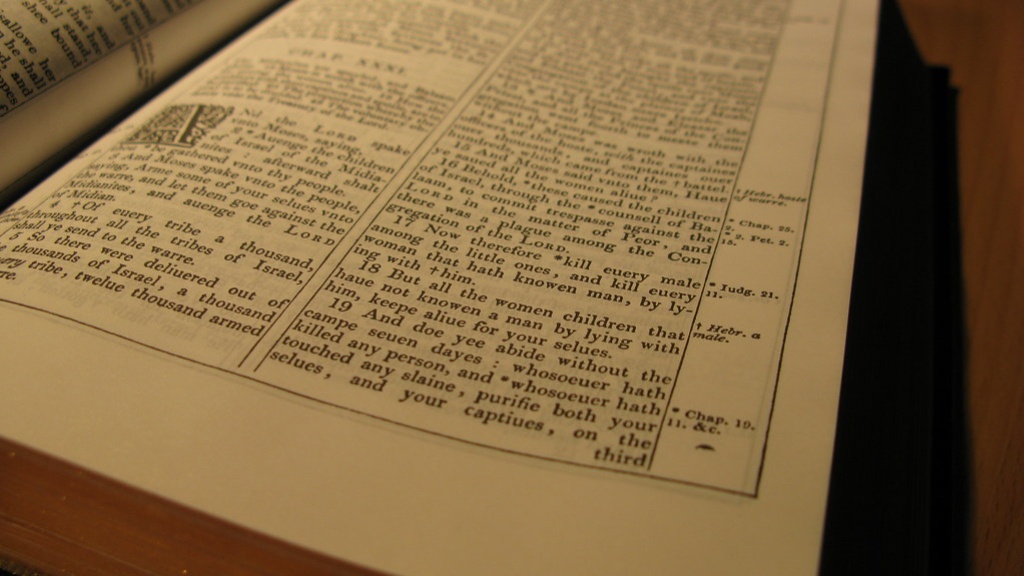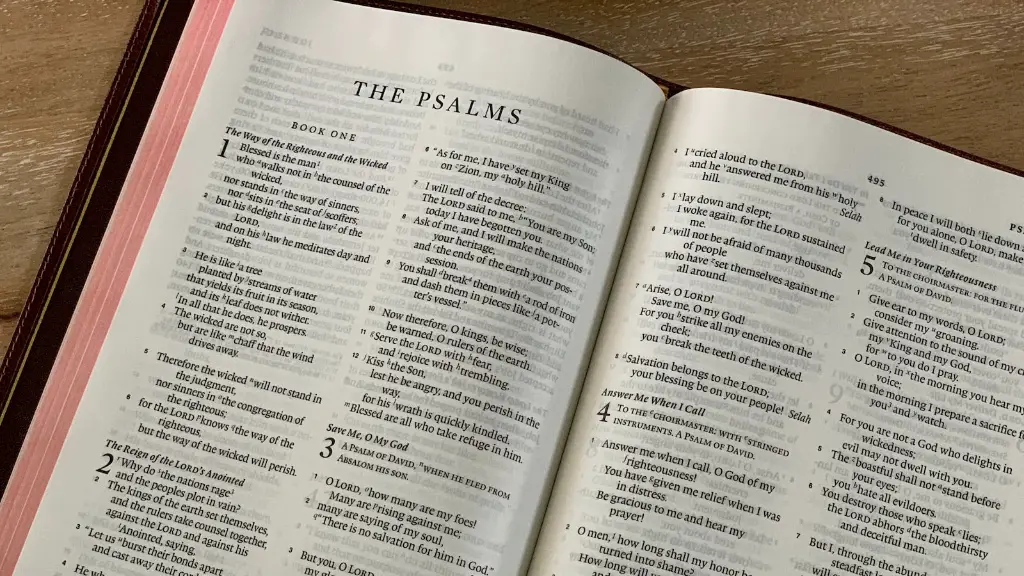The Bible, the most widely read book in history, is made up of many books and stories spanning centuries before Christ. It’s one of the most important texts of our faith, and understanding it can be an overwhelming task, but reading it in chronological order can be an invaluable way to gain perspective on the history and context of the stories. In this article, we’ll explore how to read the Bible in chronological order, with tips for breaking down the material into manageable pieces.
Explore Major Themes and Narratives
The Bible is composed of many genres, and each has its own style and narrative goals. Before reading the Bible chronologically, start by familiarizing yourself with its major themes and stories. One way to start building your knowledge is by reading the Gospels of Matthew, Mark, Luke, and John, which record the life and teachings of Jesus. The Old Testament also details the origins of Israel’s people, their relationship with God, and how their spiritual beliefs evolved.
Your journey of reading the Bible in chronological order will be easier when you know the stories and characters in advance. Focus on familiarizing yourself with the books and major narratives before reading the entire Bible from start to finish.
Gather the Persistent and Reoccurring Characters
Once you’re familiar with the major stories and characters, look for the people and events that appear regularly in the Bible, along with their part in the bigger picture. Commonly, there are prophets, judges, kings, healers, and other appearances scattered throughout the Bible. Depending on the type of Bible you use, you should be able to locate the dates of these people and events, which can be helpful in establishing a timeline.
For example, look for how Moses led the Israelites through the wilderness, how David fought the giant Goliath and was chosen to be king, or how Abraham was called by God. All of these stories play a role in the great narrative of the Bible that provides perspective to the grand scope of the text.
Organize the Biblical Plot and Timeline
Once you have familiarized yourself with the characters and the stories, and have identified those that are most relevant, begin to organize them in chronological sequence. A straightforward way to do this is to start with the stories about creation at the beginning of the Bible and move forward accordingly, keeping in mind which of the stories have a time frame, such as the events in the Gospels.
Take time to study the timeline and recognize the themes within the stories. Doing so can help you understand the historical context of the events and follow the story of God’s interactions with humanity. To further your knowledge, investigate and consider how the Bible was written and to whom it was addressed.
Get the Big Picture
When reading the Bible chronologically, it’s easy to lose sight of the big picture. During your journey, consider how the stories relate to each other and try to comprehend how they fit into the overall message of the Bible. Although each book of the Bible may cover one or two themes, review them and identify how they can contribute to the overarching theme or mission.
Remember to look beyond the text, too. Look to the world, people, and situations around you, and use them to gain a better understanding of what the Bible is communicating. There may be valuable insights that can be gained by looking at the Bible from a modern perspective.
Break it Down into Manageable Pieces
Many people believe that reading the entire Bible from start to finish is a daunting task. Breaking down the material into more manageable pieces is essential for retention and understanding. Start by committing yourself to reading a certain number of books or passages each day, or select a specific day each week to devote to your Bible reading.
Dividing the Bible into chunks makes the task less daunting and allows you to focus on each book individually. Another way to break down the material is to select the chapters or stories that show God’s relationship with humanity, or stories that focus on Jesus’ life and teachings.
Utilize Commentaries
Sometimes understanding the stories and events in the Bible requires further exploration. There are many commentaries that can provide great insights and help you move beyond the surface level understanding of the text. Look for books that offer explanations about common questions when reading the Bible and provide historical context for the stories.
Use Online Resources
In addition to commentaries, there are many online resources that can help you understand the Bible’s teachings more deeply. Many websites and apps make it easy to cross-reference verses and books, search for key words, and read verses in context. Having these tools available can be a great way to deepen your understanding of the Bible and its meaning in your faith.
Find Faithful Partners
Finally, when it comes to reading the Bible, it can be helpful to have a study partner or accountability partner. If you’re reading on your own, look for a bible study group to join or find someone to discuss the material with. Sometimes connecting with others can make it easier to stay motivated in your journey and to gain further insights from experienced readers.
Utilize Bible-Reading Plans
It’s also a good idea to have a reading plan. Bible-reading plans can provide structure and help you stay organized. They can come in the form of daily, weekly, or monthly readings with specific goals or themes that can help you focus on the material.
You may even discover scriptures that apply to your life and current situations while reading. Different Bible-reading plans may include plans to read through the entire Bible in a year and provide a way to keep track of your progress. Additionally, some may include guides, topics, quizzes, and other tools to aid in understanding the deeper parts of the Bible.
Consider Bible Translation
Finally, consider the Bible translation you’re using. Bible translations will vary in terms of accuracy, context, and understanding. Reading an accurate version that follows the original text and language of the Bible can be incredibly helpful for understanding the stories and passages you’re reading. Look for a version that is easy for you to understand and that works for your reading goals.
Find an Engaging Study Method
When you’re reading the Bible chronologically, it’s important to find a study method that keeps you engaged. Consider your study goals and find ways to make each readingsession enjoyable and interactive. Reading aloud and highlighting key topics and themes can make it easier to absorb the text and put into practice what you’ve learned.
Break it Down into Manageable Parts
Reading the Bible in chronological order can be intimidating, but organizing the text into smaller parts can help you understand the material better. Take the time to familiarize yourself with major stories and characters and divide the text into manageable parts. Only then can the whole Bible come together and provide the complete telling of God’s Word.
Develop a Prayerful Attitude
Prayer is an essential part of reading the Bible. Ask God to enlighten your mind, open your understanding, and guide you toward His will as you read. Reading the Bible is a journey that should be done prayerfully and with an open heart. Praying before and after each reading can help keep your focus on the Lord and ensure that you never miss the key messages of the text.
Discover Deeper Meaning in God’s Word
Finally, look for the deeper meaning in each of the Bible’s stories and events. Developing a consistent practice of Bible reading can help you uncover the hidden treasures in God’s Word. Use your knowledge of the scriptures to engage in conversations with others and discover how you can apply the stories to your life.
Conclusion
Reading the Bible can be a rewarding and enlightening experience, and reading it in chronological order can be an invaluable tool to gaining perspective and understanding. Study tools like commentaries, Bible-reading plans, and prayer can help along the way. Taking the time to familiarize yourself with the major stories, characters, and themes can help you gain insight into the overall picture that the Bible provides.





